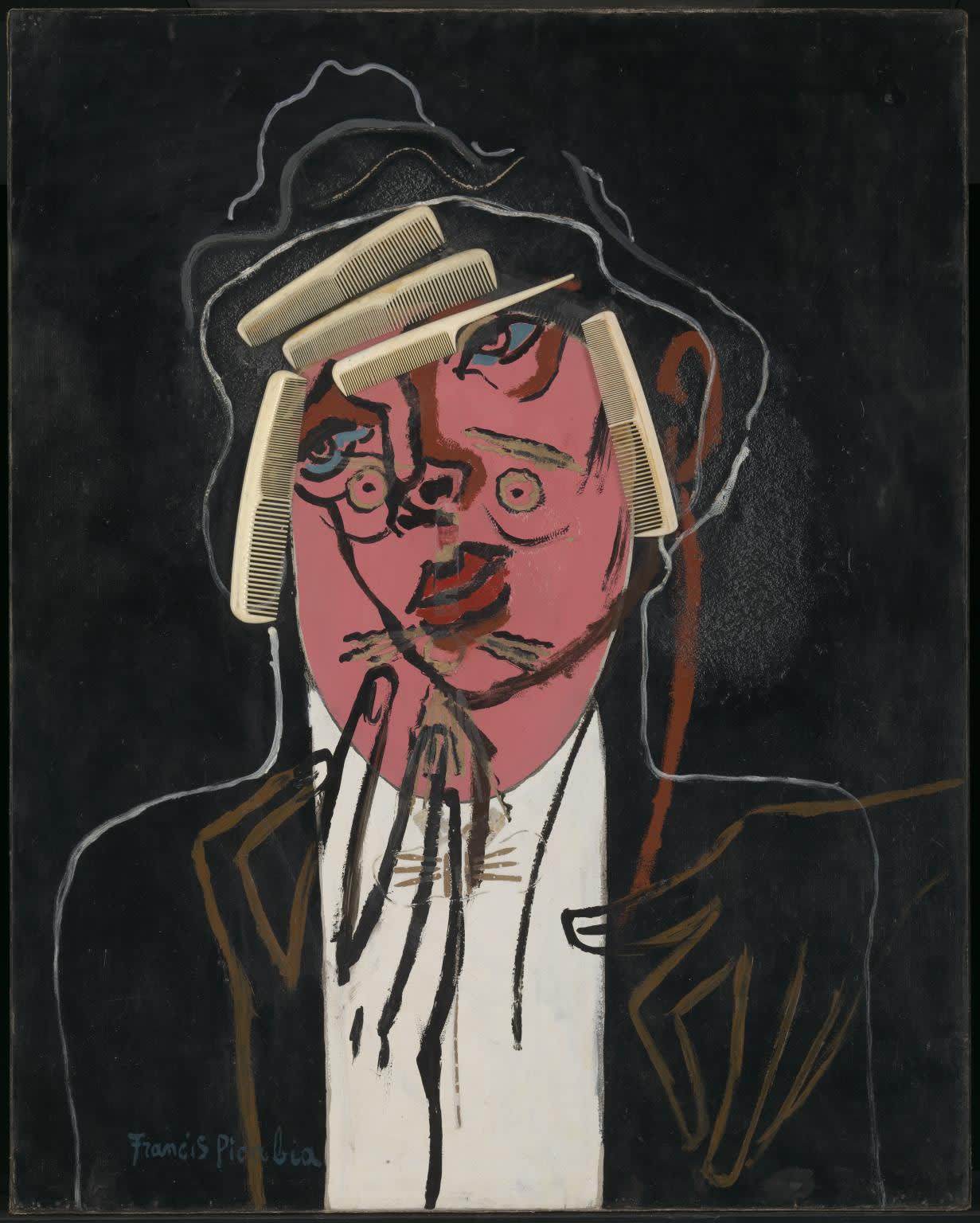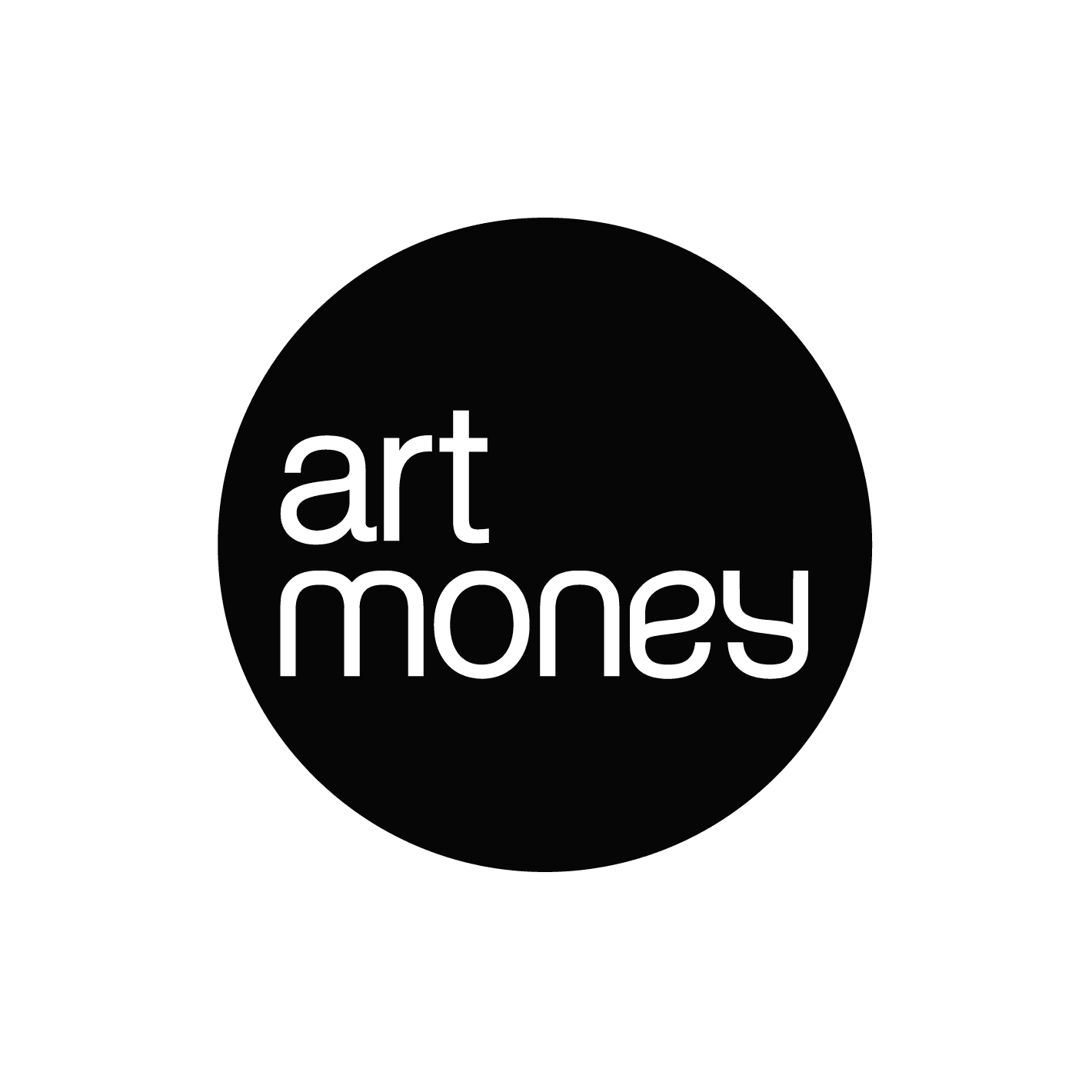
Francis Picabia
The Handsome Pork-Butcher
Oil paint, plastic combs and bone comb on canvas
92.4 x 73.7 cm
Tate T07108
© ADAGP, Paris and DACS, London 2017
From The Handsome Pork-Butcher to Don Quixote.
We looked over the balcony and there was lots of activity with concrete, site vehicles and sparks in the cavernous space down below. I was helpfully being pointed out what the end result would look like. I couldn’t clearly visualize it, but it was impressive. I clutched a small album of my abstract paintings to prove my investment in art in case the interviewer asked me, but it wasn’t needed. I got the job. It was to work in the book shop in Tate Modern and this was just before it opened in about 1999 or 2000 and I was looking down onto the Turbine Hall still under construction. I turned down the job in the end – I lived in Reading at the time and was attached to the studio group I’d joined; Open Hand Open Space, and the commute; though manageable would have been too expensive, even then. I wasn’t prepared to risk moving to London.
The other even more impressionable memory from this new gallery metropolis was left imprinted on me on my first visit when it opened. A painting stopped me in my tracks and immediately unlocked the door to many things. I’d been toiling away unfulfilled making abstract paintings that were going nowhere. Infront of me was this portrait, a strangely awkward hybrid of a dandified man on a blackboard like black ground, with economically painted – cartoon features including the lines of his expressive hands and other hands, a caressing female hand coming into the picture. There is a piggishness in the subjects depiction, and it appears in make up. It was very theatrical, perhaps it was partly female character, or an evocation of a drag character. I thought it was quite androgynous and definitely evoked an air ambiguity in many ways. There was a graceful crudity to the work, both flamboyant and melancholy, with a slightly hurtful far away look the characters eyes. One of main seductive elements for me was the collaging of plastic combs for the hair which signified the combination of suave sophistication and raw risk taking of this teasing image so offhandedly contrary and direct.
The painting was The Handsome Pork Butcher by Francis Picabia c.1924–6, c.1929–35. The dates imply a painting possibly abandoned, reworked, rescued, metamorphosed, evolved… In fact there is an air of indecisive assertiveness about the painting, an entity still in flux.
Francis Picabia 1879-1953 flirted on the outside of Dadaist and Surrealist movements before turning his back on the establishment - my kind of artist; though I didn’t realise until writing this article now that the Handsome Pork Butcher is the painting that now represents his biography on the Tate website. There’s more insight into the painting on their site and is various stages of evolution including a theory that its ‘a satirical portrait of the prominent French intellectual and politician Raymond Poincaré, Member of the French Academy, President of the French Republic 1913-20 and Prime Minister in 1922-4 and 1926-9.’ An anti-establishment painting then.
My evaluation of the painting evolved over several visits in the early 2000’s and the noticing of details like the wrinkling of the pink paint of the skin looked a bit like household gloss. It was an imaginary character, a fantastic hybrid conjured up from the artists imagination. It seemed so obvious, but if I was struggling and bored with the way I was painting I could attempt something like this, you could do anything in a painting, any way, any how. It was an obvious point, but sometimes you need to see it in front of you to understand it.
One day in my studio at Open Hand Open Space, the artist next door came in and found me hopping around on one foot. He was really amused and thought I was mad, I had taken off my shoe and impulsively screwed it onto the painting I was making. It was a Picabia comb moment. I don’t have an image of it and it was a predictably awful and uninteresting painting anyway. But the artist next door did present a shoe as an anecdote in his best man speech at my wedding many years later.
I remember doing a show and tell at an art space in Birmingham where we had to present an artwork or object that inspired us and I presented the Picabia painting to the group. My attachment to it had lessened by then, but one of the co presenter hosts who was a respected professional in the region for a period before moving on pointed out that they weren’t familiar with the work and perhaps it was more about illustration or something along those lines, though as an air of criticism. It wasn’t in keeping with the more tasteful and conceptual examples presented by others during the session and the comment was mildly annoying, though it gave me a steely resolve to reacquaint my self with the work.
I think you can see its influence in my work presented in ‘Reflections’ exhibition for Aleph Contemporary, in particular ‘Former Engine Driver’ and ‘Fantastic Voyage’, which are older paintings and its been revealing to present them with more recent painting and see the connective narrative threads.
‘Fantastic Voyage’ and ‘Former Engine Driver’ depict absurd cartoonish outsider characters, akin The Handsome Pork Butcher and a lineage to the late paintings of Phillip Guston to contemporary figurative painting. Both these paintings play on a theme of journeying awkwardly through a landscape or specifically a world invented in painting. The struggle is also in reference to the struggle of the act of painting; what to paint, how to paint, when is it finished? You think it is but time makes you realise it isn' t yet finished so the journey continues...It's taken to absurd congested lengths in Fantastic Voyage, the subject of indecision and corrective courses taken from the Picabia painting, as well as the blobby pink faces and skulls referencing the pink skin of paint of the Pork Butcher. The cartoon absurdity was played up in Former Engine Driver, based superficially on a trip to New Mexico in 2006 with the artist from my studio next door and future best man at my wedding. It was part of a group of works incorporating desert cowboy imagery fused with an interest in surrealism. I think there was a loose reference to a Dali painting with the one-legged character, 'Soft Construction with boiled beans' 1936.
The Don Quixote paintings in the ‘Reflections’ exhibition play on the literary reference of the weary traveler or adventurer tying into an overarching theme of a journey of uncertainty and indecision. Don Quixote 1 has a doppelganger character in the background; maybe he's a version further forward in the journey or further behind in the past. It could be a character going round in circles... This heavily worked painting was abandoned in about 2012, I got completely lost with it, but I returned to it this year 2020 and completed the journey, hopefully achieving the awkward fragmented balance of figuration, landscape & abstraction teetering on the edge of collapse. It links to Fantastic Voyage in that regard. I think there is a reference to struggle and progression in the art world trying to find a resting place of recognition and acceptance.
The interpretation of Don Quixote in these two paintings was based on the album cover for the Beach Boys Surfs Up 1971 which was lying around in my studio and seeded the idea for developing a version of Don Quixote. In turn this album cover was based on a sculpture ‘The End of the Trail’ 1828 of a displaced Native American Indian slumped on a horse by James Earl Fraser 1876-1953.
I can also point out that the version of Frankenstein that appears in ‘Something in the Water’ in the Reflections exhibition as well as an earlier study ‘The Substitute’ perhaps owes its resigned, troubled posture to The Pork Butcher.
Changes in a course of direction, the weariness of the journey and the poignant imagery and art that captures the physical and mental weight can represent universal experiences of the negotiating a difficult world. A fleeting glance of this uncertainty in deftly articulated by expression of The Handsome Pork Butcher of Francis Picabia’s painting.
Paul Newman
20/10/2020
Relevant Links:
-
Tate on Francis Picabia's "The Handsome Pork-Butcher"
Picabia's Handsome Pork Butcher - Tate
Explore the history, techniques, and interpretations of Picabia's iconic painting.

